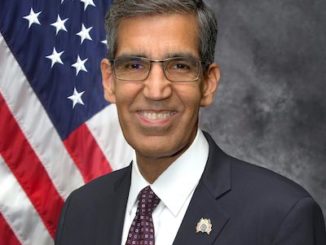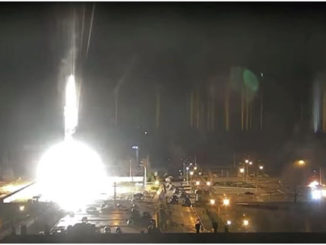


If South Asia in general and India in particular are hawking world attention, it is primarily because of an intense power competition involving the US, Russia, China and India. India’s ascend to the Presidency of the G20, the US-China rivalry, and an intense competition between India and China are some of the factors that make the Indian Ocean region a significant arena that would control world politics in the years to come. If the recent events, including holding of Conferences of Interpol, No Money for Terror, and COP 27 are any indication, it is an opportunity for India to make a concerted push for the global south.
The Russian-Ukraine conflict has been a major contributing factor in catapulting India on podium with the global leaders even while Beijing is continuing to increase its presence and influence in almost every South Asian country. As the emerging power equation in the Indian Ocean region was nakedly apparent at the just concluded G20 summit in Bali, Chinese President Xi Jinping had extended his sojourn forward with an Asian trip for deepening his country’s economic patronage in the region. As a sequel, the emerging power rivalries are likely to impact the regionsubstantially, both in terms of risks and opportunities.
The long-standing China-India rivalry may turn out to be a crucial factor to determine the balance of power in the region, especially after developments that unfolded in Sri Lanka and Pakistan this year. This and China-US rivalrycould also influence the extent to which these economic powers choose to cooperate or compete with each other. It will be equally important whether they collaborate with other major powers—regionally and globally, including in international institutions or interest-based coalitions – or confront them. Other major powers, including Japan, Russia and the European Union, that have existing strategic or economic equities in the region, or, in some cases, their stand on China’s rising influence and diktat —will also be crucial for its overall stability of the region. Every power has to watch its interests while managing its rivals. A new power play is in the offing with the smaller States looking up to bigger brothers for both political and economic immunity. Needless to reiterate, the changing dynamics will shape the future geopolitical landscape of the region.
Since Russia’s invasion of Ukraine resonates at every major political forum, G20 summit has been no different. G20 is a diverse group of nations of varying economies at different stages of development. Most of the member nations want this conflict to be resolved through dialogue. Other than India, no other South Asian nation, including Pakistan, Sri Lanka, Afghanistan or Bangladesh, with internal turmoil in hand, had shown any significant interest in resolving this conflict. Some of the G20 nations were, however, appalled by those that lecture others on diplomatic resolution but continue themselves to add fuel to the fire. Apparently, everyone is opposed to war.
The fact remains that hostilities are not abating. Prime Minister Joko Widodo of Indonesia was more than justified in his observation that the discussion on the conflict was the “most contentious” at the summit. Russian President Vladimir Putin did not attend. Instead,he sent Foreign Minister Sergei Lavrov in his place, who lashed out at the assembly for politicizing the war. Prime Minister Narendra Modi — whose advice to President Putin in September that “this is not the era of war” is said to have played a role in hammering out the joint declaration at the end of the Bali summit. It did underline the challenges India will face during its presidency: Geopolitical tensions, economic slowdown, rising food and energy prices, and the long-term ill-effects of the pandemic being the major ones. Modi stressed that peace and development were essential for people to reap the fruit of economic development. He promised that India’s leadership of the G20 will be “inclusive, ambitious, decisive, and action-oriented”, hinting that Delhi was planning to push a global campaign for a sustainable lifestyle, LiFE (Lifestyle for Environment). The theme of India’s G-20 chairmanship, as announced earlier this month, is “One Earth, One Family, One Future”. It looks India is reinventing its role as leader of non-aligned.
For India, this is an opportunity to make a concerted push for the global south. A debt crisis haunts many middle income economies. Both Sri Lanka and Pakistan were going through their worst phases both on economic and political fronts. They are both financially wrecked as their foreign reserves are exhausted. They have little or no money for fresh imports, including food. Crises led to fighting on streets, including invasion of President’s Palace in Colombo and assassination bid on former Prime Minister Imran Khan of Pakistan.
In addition, Climate change, and finding the money to make the “clean” transition, is another challenge. Pakistan faced fury of unprecedented floods as the world continues to be peeved by drastic climate changes. This is an opportunity for India to make a mark as a global leader. All eyes will be focused on Delhi. It has an important task on hand that requires it to avoid the temptation to turn its G20 presidency into a gimmicky year-long “festival of India” in the run-up to the 2024 general elections.
The outcome of the present intricate rivalries will have implications beyond South Asia and the Indian Ocean—for regional stability and security in the Indo-Pacific and for the global balance of power.
It is why this region has Joe Biden administration’s interest and attention. It will require new alignments mandating collaborations with allies and partners while competing with rivals to protect U.S. interests, grappling with the risk of conflict, and, if possible, exploring cooperation with China. Realizing the changing geopolitical scenario, Singapore’sdefense minister Ng Eng Hen was forthright when he said his country wanted India to play a bigger role in the South China Sea. Similar views have been expressed by the leaders of Vietnam and the Philippines.
Putting confidence in India by the leaders of Southeast Asia to secure the region’s security affairs is a significant development. It virtually indicates India’s emergence as a great power in Southeast Asia, and by extension, in Asia itself. The significance of Southeast Asia lies in the fact that this crucial strategic region connects the Indian and the Pacific Oceans, and includes some of the most important maritime chokepoints. Further it may be the site of order-making in Asia in the context of the rise of China. Therefore, India’s emergence as an undisputed power in Southeast Asia is significant. There could be many factors responsible for it. The foremost of these is cordiality on the territorial front where there are no territorial disputes between India and its immediate neighbors in Southeast Asia. In the Southeast Asian region, India has a land border with only one country, Myanmar, which was fixed by their British colonial rulers in 1937. It has maritime borders with three Southeast Asian states: Myanmar, Thailand, and Indonesia. India’s maritime boundaries with Thailand and Indonesia were fixed through a trilateral agreement in 1978, while India’s maritime boundary with Myanmar was finalized in 1987. The situation, however, continues to remain unaltered and sensitive in the South Asian region where Pakistan continues to raise the Kashmir issue at every possible forum.
Looking at South Asia today, one tends to agree somewhat with former National Security Advisor Shivashankar Menon, as he talks of a paradox, saying: “Many of our countries are in economic difficulty and face political uncertainty; and yet, to my mind, we have a moment of geopolitical and economic opportunity. “Many describe our present condition as a crisis. Five governments changed in south Asia in the last year and a half—not all of them in an orderly, willing or predictable manner. Three of our countries are in the advanced stages of working out solutions to their debt crises with the IMF and international community, and more may have to seek help. “Our economies are reeling from the global economic slowdown and the real prospect of recession in major economies, from the fall in remittances and tourism earnings caused by the pandemic, from volatility in commodity prices, and a decline in export earnings. “This is not unique to south Asia. We are not alone in our economic troubles. The IMF says that 53 developing countries are at grave risk of debt crises. What makes this truly worrying is the fact that we have seen this coming for years but still nothing meaningful has been done about it.
Judging by the response, or lack of it, that the international community mounted in the last decade to the Covid pandemic, the developing country debt crisis, climate change, and other transnational problems, I think we can safely say that we should have low or no expectations from the international order.
“We cannot look to the world for answers or solutions to our present problems. Besides, the prospects for the world economy are also not good with growth forecasts being steadily revised downward and the real possibility of a recession in the US and Western Europe and a considerable slowdown in China. “Politics is in command of economic decisions in all these countries, both internally and externally, unlike the globalization decades after the Cold War. “If this is how I see the situation, how can I say that we may have a moment of geopolitical and economic opportunity?” says Shivashankar Menon. He has his viewpoint. Developments in South Asia have been rapid and more or less on expected lines.
Since a lot of action has been taking place here, South Asia has become the center of global geopolitics. Developments in Afghanistan, Pakistan and Sri Lanka are far too obvious. They put India on active alert as problematic neighborhoods are not what it needs. Instead, it needs to play a role and use the developments as an opportunity to stay a leader in the new world order.
Tormented by Covid 19 pandemic and rapid globalization have greatly influenced the world economy and global politics. Emerging economies are all in trouble and changing. The trouble spots are on the rise and resources are drying up. Terror has been raising its head. And intriguingly, the economies tottering to the brink face accusations of abetting terror. These could be diversionary tactics for those abetting it but are devastating for the rest. The writing is on the wall for everyone as the power rivalry is getting intensified. The troubled zones are swelling in size and threaten world peace. South Asia has more hot spots than any other region elsewhere. Trouble-torn nations make the region more vulnerable as they are gasping for breath. Global politics are more fraught than they have been for a long time, with power rivalries becoming intense and alarming.
It is the time for India to shed its role as a mute spectator to developments in its immediate periphery and elsewhere and become more proactive. South Asia now has the leverage to make the sub-region an object of outside great power interest for its rivalry and contention. Nepal has just completed its elections to elect a new Parliament. Its destiny, both as part of BRI and the free and open Indo-Pacific strategy, needs a close watch. This great power rivalry also creates an opportunity. One cannot ignore or overlook that in the decade before Covid direct foreign investment in South Asia, particularly from China, grew in proportion to how acute their contention was as great power relations deteriorated. Of late, international organizations are not only losing their significance but are becoming ineffective. World powers are trying to score a point with their direct economic interventions. Great power rivalry has assumed new disturbing and telling proportions. Covid 19 pandemic witnessed greater dependence on big brothers as multilateral organizations and international institutions got pushed to side lines.
The global powers have been successfullyscoring debating points and gaining political advantage rather than dealing with the humanitarian crisis caused by COVID-19.
If South Asia is at the center stage of global politics, it is because of the change in the center of gravity of economic and political activity. South Asia, from geopolitical backwaters, has now become an integral part of the global economy. All South Asian economies are now integrated into the global economy. It is this integration that brings both problems and opportunities for South Asia. The figures show that South Asia did well from the globalization decades: Countries like Bangladesh did best, improving their economic condition and the welfare of their people. Both our present economic crisis and our geopolitical opportunity are proof that South Asia is now an integral part of a globalized world though some problems of the region may be attributed to globalization. Then there is no going back. South Asia needs to enhance its regional connectivity and cooperation, improve its dealings with the rest of the world, and create new opportunities for its growing clout. Supply and value lines, too, need to be supported and supplemented.
(The author is a senior journalist.)





Be the first to comment